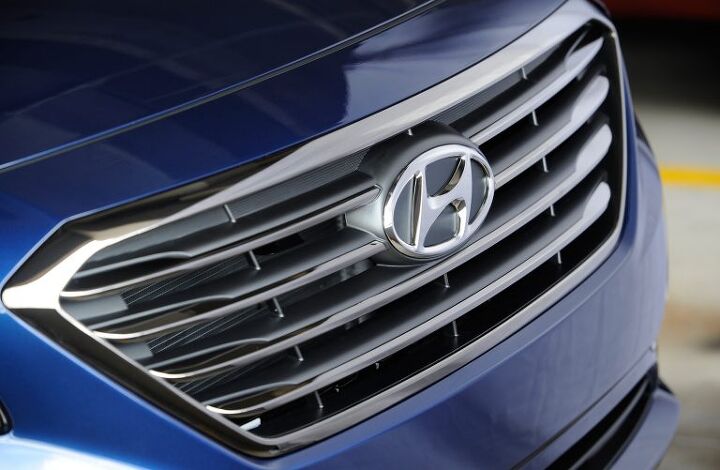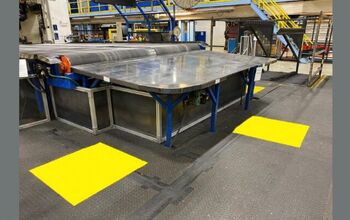Report: Hyundai Embracing Subscription-based Features, Buying Boston Dynamics

Following reports that Hyundai Motor Company managed to purchase American engineering and robotics firm Boston Dynamics from Japanese financial conglomerate SoftBank for a cool $921 million, we’ve learned that the South Korean automaker has also fallen into embracing on-demand features. The trend, which is sweeping through the automotive industry to our dismay, basically involves manufacturers hiding vehicle options behind a subscription paywall instead of just letting you purchase the options you wanted upfront.
That means tomorrow’s car shopper might find themselves buying a vehicle that’s already fully loaded from the factory only find themselves forced to unlock heated seats or an upgraded sound system via monthly payments. In our estimation, the whole concept is ludicrously wasteful, diminishes the private resale values of automobiles, and seems like the kind of corporate nonsense reserved for dystopian fiction novels.
Despite connected vehicles operating under the auspices of someday offering legitimate self-driving capabilities, their ability to shift data is currently being used as a way to monetize customer/driving information. While over-the-air updates can benefit today’s software-heavy automobiles, the industry seems more interested in leveraging ones and zeros for its own gain and it’s exactly what makes subscription-based features possible.
From CNET:
It’s coming as soon as late 2021, according to a sweeping Thursday announcement from the company in which it detailed its near-term strategies, and the minor detail that could usher in big changes for future Hyundai owners’ ties to forthcoming Level 3 partially automated driving functions and the introduction of over-the-air updates. OTA updates aren’t exactly groundbreaking these days as more automakers turn their vehicles into highly connected machines (even the 2021 [Ford] F-150 is OTA-ready), but subscription-based features is a function quickly forging a relationship with such capabilities. Hyundai didn’t detail what it plans to include in its version of the feature subscriptions, however. We’ll surely learn more soon.
As for the purchase of the Massachusetts Institute of Technology spin-off Boston Dynamics, Hyundai has refused to commit to anything. Officially, it “cannot comment on market speculations” but The Korea Economic Daily reported that the deal is already done and that Hyundai’s board will finalize the acquisition at its December 10th board meeting. It also said that the automaker had hired Goldman Sachs as its adviser and top Korean law firm Kim & Chang as the legal counsel in its attempt to acquire an engineering firm.
While we can only imagine what kind of fruit this will produce, Hyundai has previously said it would invest up to 1.5 trillion won ($1.4 billion USD) in robotics by 2025. Chairman Chung Euisun also said that robotics would comprise roughly 20 percent of the company’s business moving forward. This is supposed to encompass everything from taxi-like air vehicles and last-mile delivery bots to automated factories.
Boston Dynamics is probably best known for developing the four-legged Spot robot. But it has also produced the humanoid bipedal Atlas and logistics-focused Handle. Sadly, it appears to be in an abusive relationship with all of them.
[Image: Hyundai]

A staunch consumer advocate tracking industry trends and regulation. Before joining TTAC, Matt spent a decade working for marketing and research firms based in NYC. Clients included several of the world’s largest automakers, global tire brands, and aftermarket part suppliers. Dissatisfied with the corporate world and resentful of having to wear suits everyday, he pivoted to writing about cars. Since then, that man has become an ardent supporter of the right-to-repair movement, been interviewed on the auto industry by national radio broadcasts, driven more rental cars than anyone ever should, participated in amateur rallying events, and received the requisite minimum training as sanctioned by the SCCA. Handy with a wrench, Matt grew up surrounded by Detroit auto workers and managed to get a pizza delivery job before he was legally eligible. He later found himself driving box trucks through Manhattan, guaranteeing future sympathy for actual truckers. He continues to conduct research pertaining to the automotive sector as an independent contractor and has since moved back to his native Michigan, closer to where the cars are born. A contrarian, Matt claims to prefer understeer — stating that front and all-wheel drive vehicles cater best to his driving style.
More by Matt Posky
Latest Car Reviews
Read moreLatest Product Reviews
Read moreRecent Comments
- Cprescott No big loss. It was always third rate when there was competition. At best its only good point was its price point.
- ToolGuy Journalists saving the world again. LOL.
- Stars9texashockey The Lyriq is selling better because it's discounted now. l think Lincoln does a much better job of styling their SUV's than Cadillac (except for Navigator vs. Escalade,) but they don't sell.However, Cadillac continues to offer sedans where Lincoln doesn't.
- SCE to AUX At this point, I don't know who the target customer is for Cadillac. I have zero interest.
- Cprescott Cadihack styling is stale - the interiors have not been luxurious, and the V-Series should be the base models in order to make waves. Until this company ditches the putrid and hideous pre-dented look of Arts and Scientology (!), the company is going nowhere.


































Comments
Join the conversation
This is what economists are calling “the great reset”. Where you don’t actually own anything in your property, but you are still going to be happy about it.
"But I want to OWN my stuff!" Says the modern consumer as they listen to Spotify in their car that only has 88 payments left.